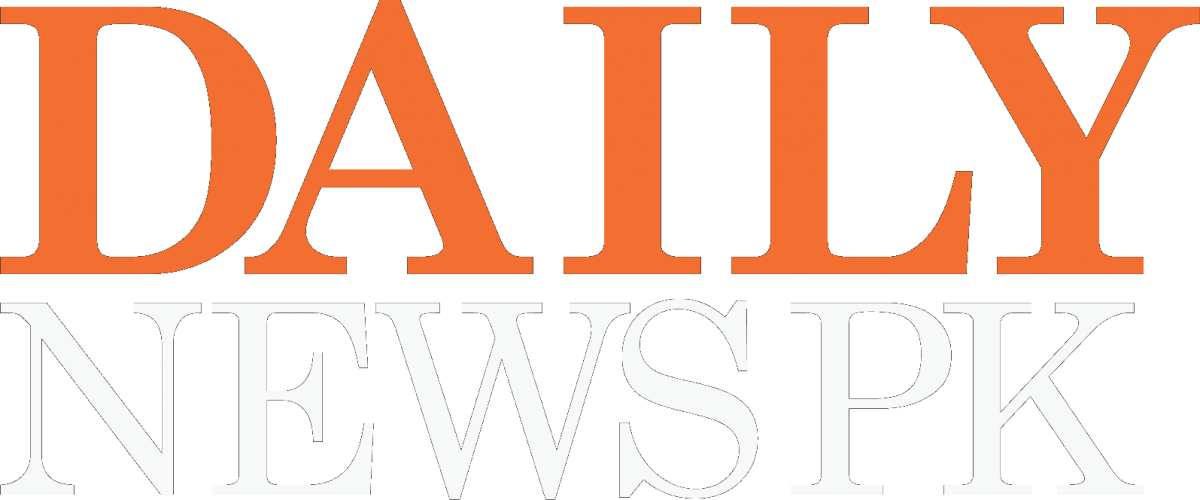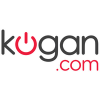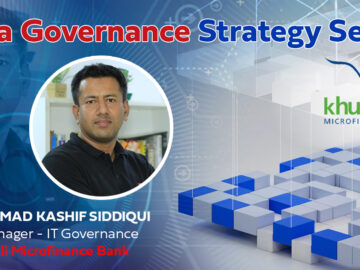
“Customers would be right in withdrawing trust, had we shut down and not helped them in this time and just managed our own risk”, expressed Kabeer Naqvi, President, and Chief Executive Officer at U Microfinance Bank Limited, during an exclusive Q&A session with our editor in Chief on the impact of COVID-19 on the overall financial landscape in Pakistan.
1. How is COVID-19 impacting operations? How is your institution reacting?
First of all, we have been made part of the essential services as per the guidelines of the government of Pakistan. Therefore, as a financial/banking institution we could not and did not shut down. The head office and all our branches remained open, obviously implementing the proper SOPs and social distancing protocols diligently.
Another thing that needs to be considered is that we primarily operate in the rural part of Pakistan, where a bulk of our customers are either farmers, small entrepreneurs or daily wagers, i.e. the most vulnerable segments; slightly above those at the bottom of the pyramid – so economically enabled, but in that bracket. Their needs are very different from people in cities who can afford to go through a lock-down. Our client base is not as such, as they rely on their day to day activity to survive, hence that is all the more reason for us to keep functioning.
On top of being an essential service, we had to stay open to keep our clients afloat. We are in the business of lending and people take working capital loans from us. While the whole world has suffered because of the lock-down, the economy has slowed down or completely came to a halt as it seemed to be the case at one point in time, we could not stop lending to our clients because they would not be able to recover from it after the lock-down. Even before this crises research had proven that microfinance is an essential tool to help customers survive shocks like natural disasters, illness, etc. and this is even more so the case in our current reality. So we had to keep our operations going not just to keep the branches/business open, but to keep the lending operations running. A counter-argument would be that we are increasing our risk disproportionately while knowing that there is no money circulating in the economy but continuing our lending. To this point, we did so while trying our best to secure ourselves by giving people more secured loans against gold. That has been our strategy and it has worked very well for the past 2 months. Additionally, we are also giving emergency loans to our good clients that we know have a good credit history, and have been with the bank and in this time of need, we did not stop extending credit to them, but rather went the extra mile and gave them bridge financing for this period as well.
For U Bank, as is the case for everybody else, our sales have reduced. However, it is important to note that this adverse impact on sales isn’t due to COVID-19 but more because of the consequent lock-down. However, we are holding our customer’s hands and we are not letting go in this time of need, because our customers are vulnerable in the face of this crisis.
2. How are you supporting and managing your staff working remotely?
In microfinance human intervention is very important and there is a very intimate relationship between the relationship officer (RO) and the client and if you take that away, the whole structure collapses. It is very different from commercial banking and this human interaction is crucial. In order to prepare our field staff in the face of this crises we have given our ROs protective gear and educated them on its usage. We are also sanitizing our branches and office spaces and so far there has been no reported case which means that our strategy has worked very well.
Additionally, U Bank is present in 183 districts across the country and many of our branches are at last-mile locations. In some areas we are the only ATM available, so we cannot afford to shut down because there is so much dependency of the local community on us. All these precautions have worked well and our clients are happy, in fact, relieved, that we did not shut down and did not stop lending or dealing in cash.
3. How are you reassuring your customers and rebuilding trust?
We’ve been very fortunate to not have lost any trust, to begin with, but as this crises first emerged we did fear that we might. However, now we’ve been able to manage our risk a lot better by working hard to keep this relationship intact. Our customers are continuing to come to us as their primary choice, and they will continue to do so in the future as well. Being a bank that has a bulk of its portfolio tied to the agri-economy and food security, a majority of our customers will never completely cease their income generation activities i.e. farming and will continue to require working capital to continue. By sending them the message that U Bank will weather such storms with them, we’ve strengthened our relationship.
4. What is your strategy to migrate your clients on to digital channels, since the breakout is affecting day to day banking?
U Bank had already embarked upon its digital transformation journey, long before the COVID-19 situation emerged. However, while we talk about the digital transformation it is very important to segregate the different segments that we serve. U Bank’s digital application and internet banking caters specifically to the needs of our corporate and urban clients, which has started working very well, and obviously given the COVID-19 situation, the pace of adoption has accelerated, so we achieve our targets and in fact even slightly exceeding them.
This does not hold for our microloan customers because they are not the ones who have moved to these platforms. Having said that, there are two things that we did, one was rolling-out our digital loan acquisition (DLA) application. This application was more geared towards facilitating our employees to digitally acquired loans and we see a significant spike in the adoption of that. We launched it in January 2020, and we are now seeing a good percentage of loans being processed digitally, through tablets and no paperwork. Another thing is that for our rural customers, there is an increase in the use of mobile wallet adoption for remittance purposes, and the DLA also has a wallet component to it, so the loans are being dropped into wallets directly. So overall, we see a greater uptake of wallets, which are linked to the tablet-based loans.
5. What digital offerings have you started during the pandemic? And how this pandemic has accelerated your digital transformation journey?
The pandemic is not pushing our journey. We were an already established branchless banking player in the market, and while there is some tailwind that we get as a result of the pandemic, we cannot say that we started any digital offering particularly due to the pandemic.
6. How will this pandemic affect the experience of branch banking and other human-assisted channels such as call centers? Do you think there will be an exponential growth of digital adoption?
The way of life has been affected due to the social protocols put in place for COVID-19 prevention. The number of operating hours of branches has been reduced by our regulator, so in that matter, the influx of customers is not the same as it used to be, which has reflected in lower amounts of sales, but not to the extent that it has affected our business catastrophically. So the pace of life has slowed down e.g. whatever we could do in 4 days we are now doing in 6 days, but the important thing is that we continue to do it, we are out there and we are serving everyone. Our digital channels are also helping us extend our outreach and be able to offer help to those that need it most.
I would say that there is a great opportunity for growth in digital adoption. We will surely explore this and many learnings are emerging continuously as we all adjust to this new reality. As things unfold, a lot will depend on the timeline of this pandemic, so naturally, we will all be pushed to look at out of the box solutions. For now, I am just telling you what happened in the last 2 months has worked alright for us, but if this continues and the impact of this pandemic on health and life becomes much more severe, we may not be able to operate the way we have been functioning for the last two months. So for that we have already started thinking but having said that, the microcredit business cannot be done on scorecards. Ultimately, if we are bound by certain things and are unable to open branches, it will adversely affect sales and will not be completely compensated by leveraging digital channels. The deposits and remittances can continue to grow, but the loan business which is our primary revenue engine will suffer. It would be incorrect to say that it can be transferred 100% to alternative channels, and we will definitely take a hit.
7. How do you think this outbreak of COVID-19 will affect the industry? What will it look like?
COVID-19 will definitely impact the industry in an adverse manner. Due to a shortage of cash in the market and lack of activity, the industry is going to go through a liquidity crunch. This is the most important thing as people’s purchasing power is going to be eroded because of low business activity. Hence, all the more reason to continue to extend credit. However, the other part of this equation is to raise enough funds, accumulate enough capital, and to gain shareholder’s confidence to be able to operate in this high-risk environment. So our challenge now is multi-pronged, that we have to continue to convince our shareholders that this is a viable business and this is something that we should not look away from for the society and segment that we serve. Working towards the social and economic uplift of this segment is a part of our DNA and our core mission, which the shareholders are well aware of as well.
Having said that, in order to deal with this higher risk environment, we are building up our liquidity to combat a crunch if we come to that. We are ramping up our deposits and borrowings, we are accumulating as much capital as we can and in whatever form we can and we are continuing to monitor the situation closely and building resilience in our balance sheet and that is the need of the hour.
The industry will look the same, but will not continue to grow at the same pace. So while there may be no reduction in the size of the overall pie, but the way it was growing over the last 3-4 years is not something we will see for some time. Since we are closely tied to the agriculture sector, we are not at risk to see our portfolio completely evaporate unlike say consumer banking products. Since we are in the productive lending business linked to the agri-economy it is safe to assume that this will continue to be the case even with slightly slower activity because the country is dependent on this food supply chain. The pace of growth however will definitely slow down. For instance if the Compound Annual Growth Rate (CAGR) was 30-40% before, it will now perhaps fall to 15%, that’s the worst that can happen and while that happens, we have to remain liquid as the liquidity crunch is going to hit everybody.
Again as a bank linked to agriculture, we had already started witnessing and preparing for the adverse impacts of climate change even before the COVID-19 crises. We were adjusting our processes, operations, and business strategy to cater to such crises and had already been seeing shifts in our portfolio due to this. One major example of this is the locust crisis, which hit us last year, and struck again this year, and is projected to lead to a loss of PKR 6 billion to the country this year alone. Simultaneously, we have been hit with COVID-19 as well and U Bank has been ensuring that all of the insights from the ground are encapsulated in our short-term and medium-term strategy.
To end this on a positive note, overall we are doing well and adapting to the changing situation. As a bank we are here to stay and to continue holding the hand of our customers through these testing times as we wait for things to hopefully start stabilizing soon.











Like!! I blog frequently and I really thank you for your content. The article has truly peaked my interest.